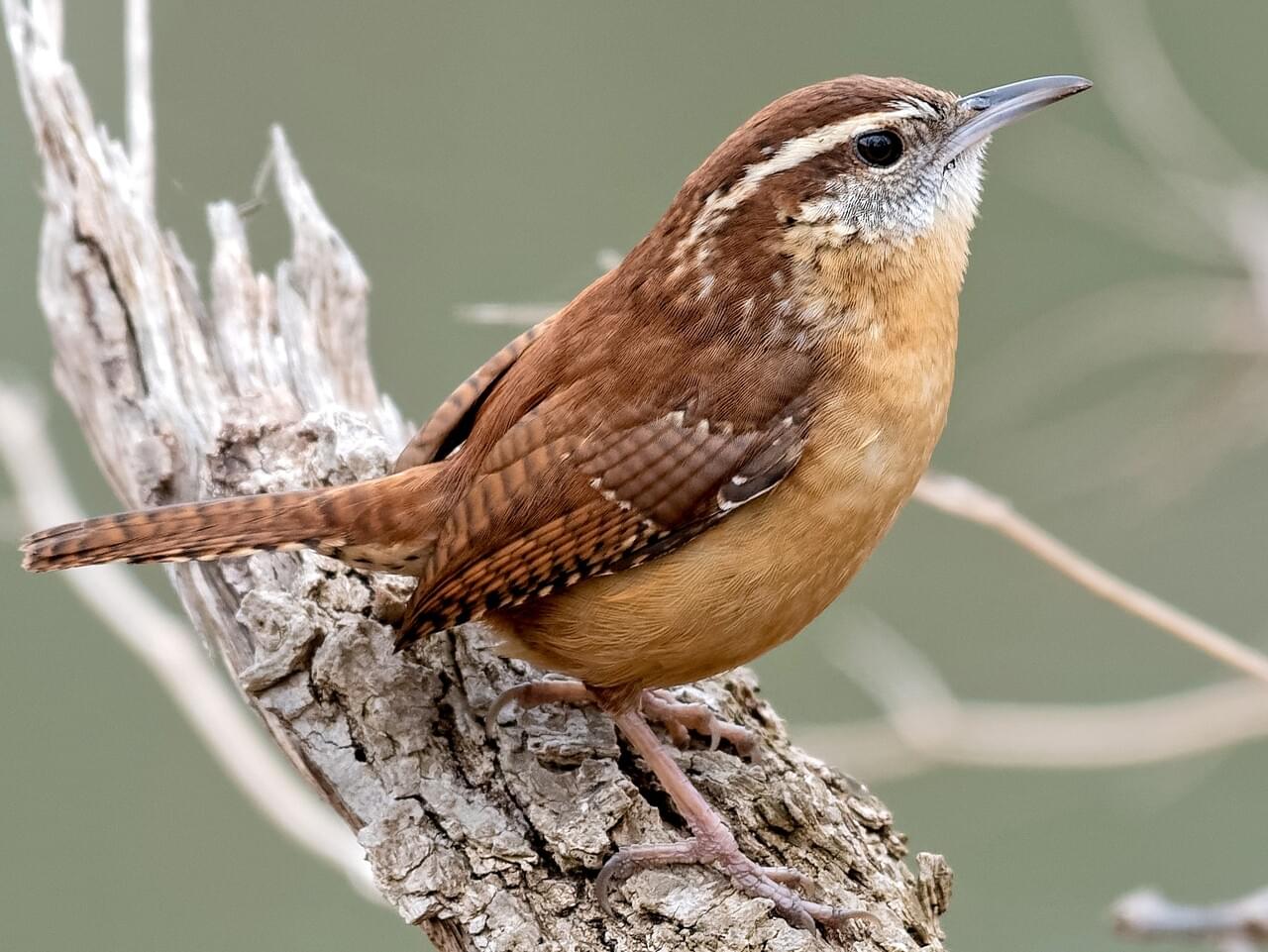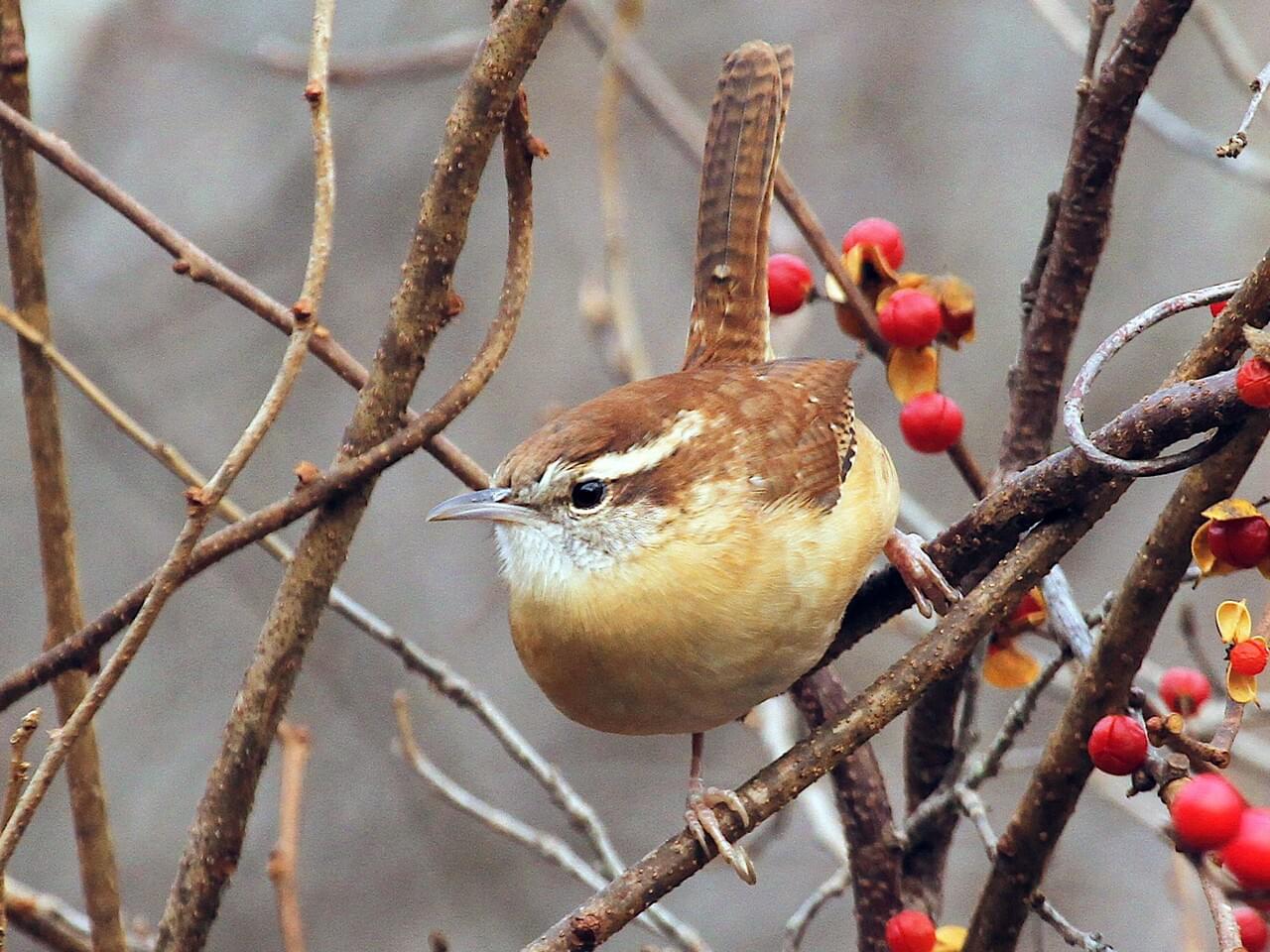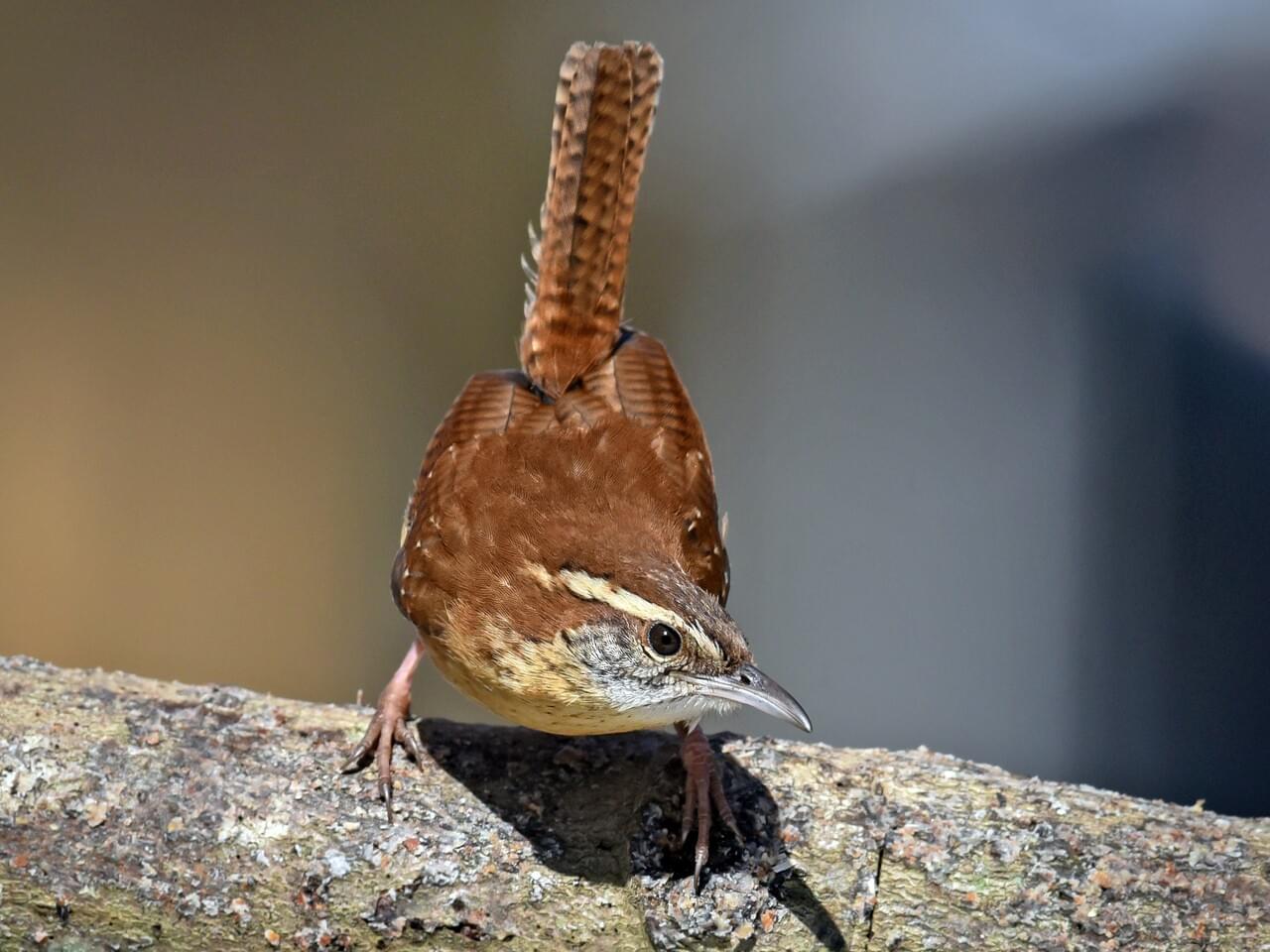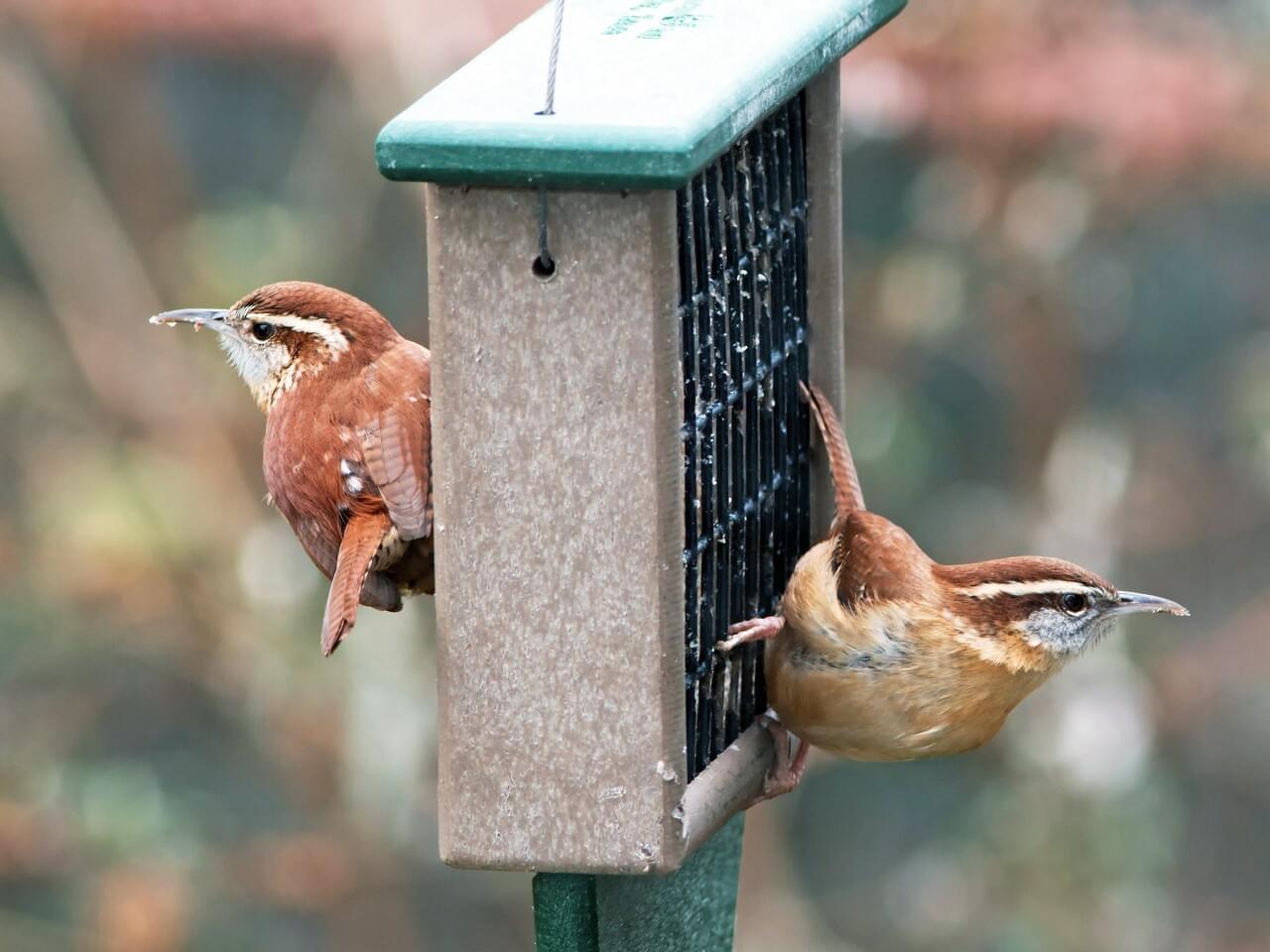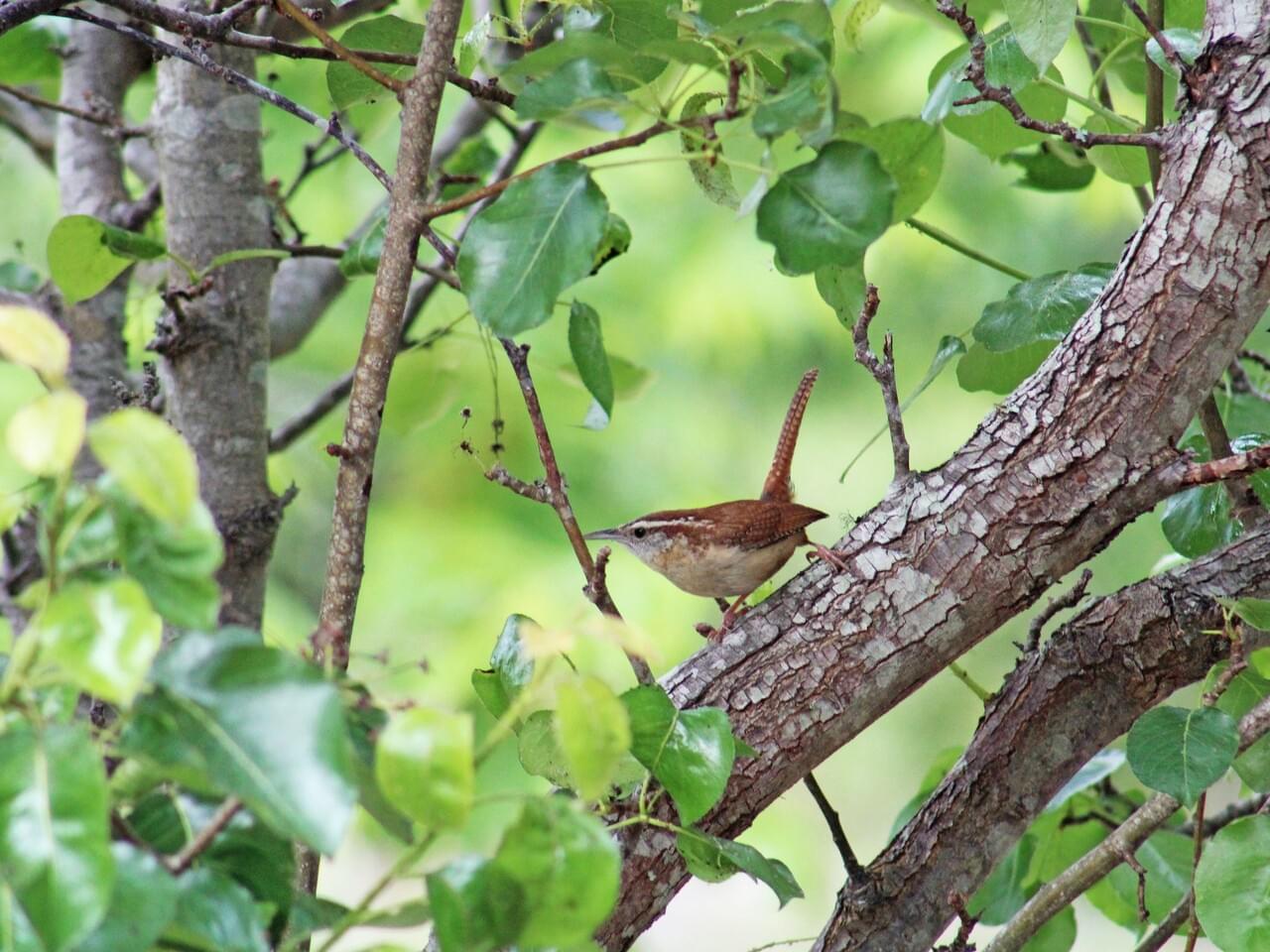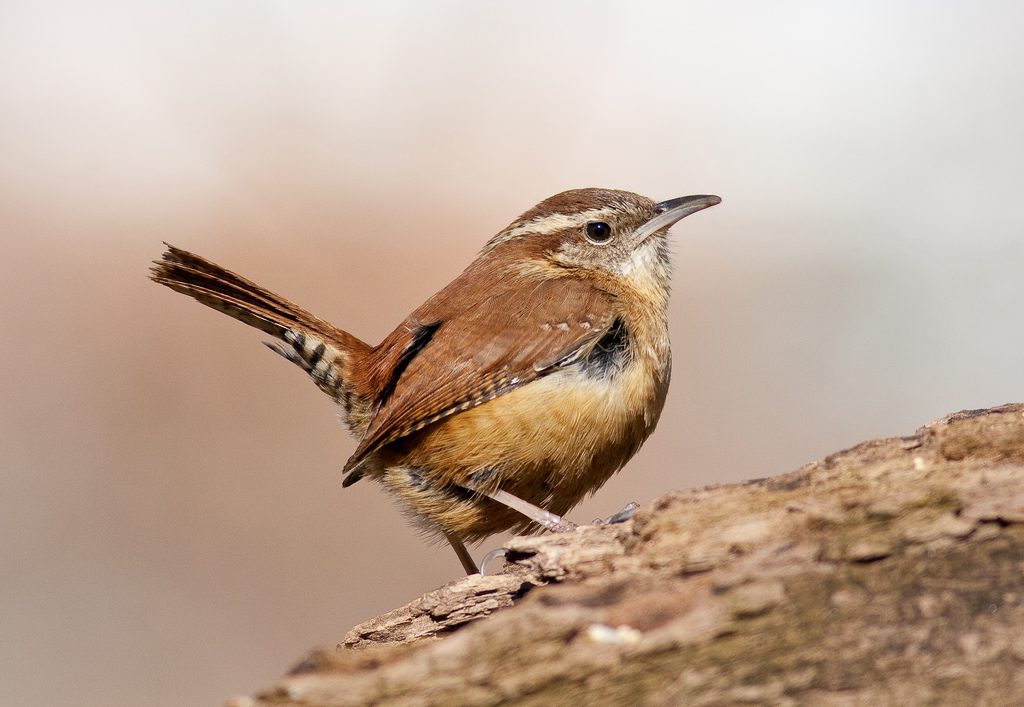 Photo ©
Kevin Shea
Photo ©
Kevin Shea
Carolina Wren
Regional Species
In summer it can seem that every patch of woods in the eastern United States rings with the rolling song of the Carolina Wren. This shy bird can be hard to see, but it delivers an amazing number of decibels for its size. Follow its teakettle-teakettle! and other piercing exclamations through backyard or forest, and you may be rewarded with glimpses of this bird's rich cinnamon plumage, white eyebrow stripe, and long, upward-cocked tail. This hardy bird has been wintering farther and farther north in recent decades.
Range
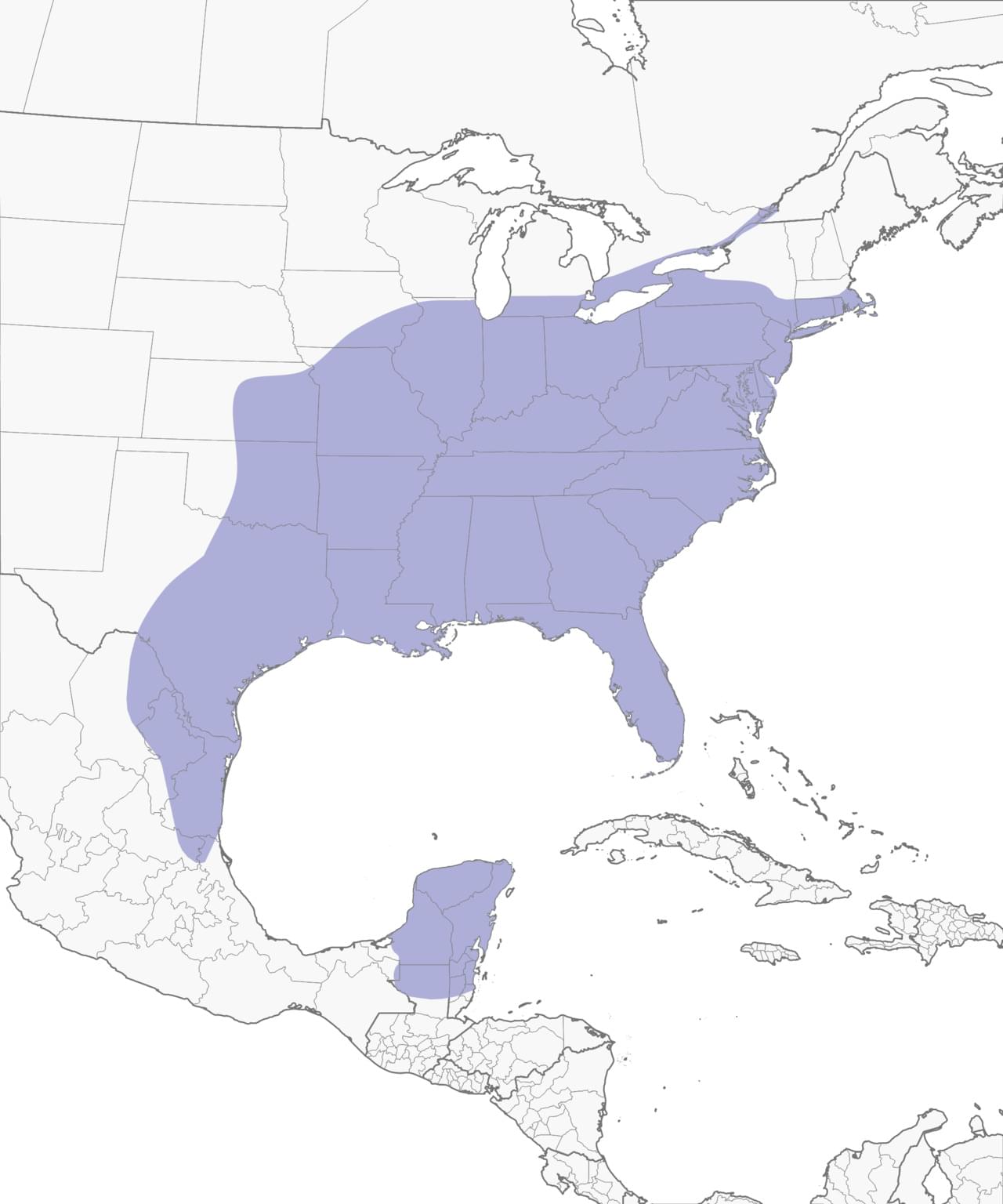
Habitat
Carolina Wrens frequent vegetated habitats such as brushy thickets, lowland cypress swamps, bottomland woods, and ravines choked with hemlock and rhododendron. They gravitate toward shrubby, wooded residential areas, overgrown farmland, dilapidated buildings, and brushy suburban yards.
Food
Insects and spiders make up the bulk of this wren’s diet. Common foods include caterpillars, moths, stick bugs, leafhoppers, beetles, grasshoppers, crickets, and cockroaches. Carolina Wrens occasionally eat lizards, frogs, or snakes. They also consume a small amount of plant matter, such as fruit pulp and seeds from bayberry, sweetgum, or poison ivy.
Behavior
Carolina Wrens usually go about their business alone or in pairs; after nestlings have fledged, you may see family groups feeding together. Feeding on or near the ground, the wrens run, hop, and flit around leaf litter and tangled vegetation; they dodge in and out of dark spaces created by downed trees, decaying logs, old stumps, and upturned roots. They climb up vines, trunks, and branches, poking into squirrel nests and probing nooks and crannies in search of insects. Carolina Wrens use their curved bills to turn over decaying vegetation and to hammer and shake apart large bugs. They roost in bird boxes, abandoned hornet nests, hanging plants, garages, barns, old nests, and other shelters. A weak flyer, this wren makes brief, quick aerial forays over short distances. Pairs stay bonded year-round, with no vacation from singing or defending territory.
Nesting
Male and female Carolina Wrens build their nests together. One member of the pair may stay at the site while the other gathers material. The first nest can take a week or more to build, but later ones take shape in as few as 4 days. The bulky nest is cup-shaped, usually domed, with a side entrance and often a woven extension like a porch or entrance ramp. It's loosely constructed of a great variety of materials such as bark strips, dried grasses, dead leaves, pine needles, hair, feathers, straw, shed snakeskin, paper, plastic, or string). The female lines the nest's inner bowl and may add nest material after incubation has begun. Nests may range from 3 to 9 inches long and 3 to 6 inches wide.
Appearance
Typical Sound
© Wil Hershberger | Macaulay Library
Size & Shape
The Carolina Wren is a small but chunky bird with a round body and a long tail that it often cocks upward. The head is large with very little neck, and the distinctive bill marks it as a wren: long, slender, and down curved.
Color Pattern
Both males and females are a bright, unpatterned reddish-brown above and warm buffy-orange below, with a long white eyebrow stripe, dark bill, and white chin and throat.
Plumage Photos
Similar Species
House Wrens are smaller, darker brown, and shorter tailed than Carolina Wrens, lacking the white chest and eyebrow stripe. The House Wren’s song is very complex, bubbly, and chattering, whereas the Carolina Wren sings a sweet, rolling tea-kettle, tea-kettle, tea-kettle with many variations on that two or three-noted theme. They also have shorter tails. Bewick’s Wrens are a grayer, longer-tailed western counterpart of the Carolina Wren. Where they overlap in the central U.S., look for the more subdued coloration of Bewick’s Wren compared with the warm buffy or reddish-brown of the Carolina Wren.
Did you know?!
- One captive male Carolina Wren sang nearly 3,000 times in a single day.
- A pair bond may form between a male and a female at any time of the year, and the pair will stay together for life. Members of a pair stay together on their territory year-round, and forage and move around the territory together.
- Unlike other wren species in its genus, only the male Carolina Wren sings the loud song. In other species, such as the Stripe-breasted Wren of Central America, both members of a pair sing together. The male and female sing different parts, and usually interweave their songs such that they sound like a single bird singing.
